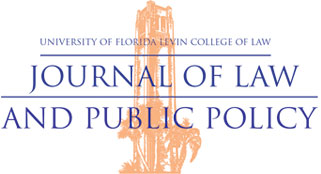
Abstract
Fear and distrust of law enforcement have been longstanding in the Black community. Those in power have fueled this fear and distrust through brutal beatings, harassment, and general discrimination. The reasonable suspicion standard is problematic because it allows for unchecked biases to guide interactions between police officers and minorities, creating incentives to persecute. But today, a new tool exacerbates this problem and makes escaping the violence nearly impossible, deepening the contempt, and spreading its adverse effects: the media. Using a hierarchy of “if it bleeds it leads,” the capitalistic fear-based media targets the anxieties and biases of Americans, creating a more profound fear and distrust of law enforcement, all while simultaneously strengthening the fear and distrust of Black men. The U.S. Supreme Court decision in Illinois v. Wardlow adds to the mix by allowing for the stop and frisk of individuals who run from police officers while present in “high crime” areas—a known proxy for minority neighborhoods. A Black man’s flight is a result of racial profiling and media-bred fear of fatal encounters. But the law has been slow to reflect the implications of these realities. In the wake of highly publicized police shootings, the legal discussion is focused on holding officers accountable. This Note begins by addressing the reasonable suspicion standard and the inordinate power it gives police officers over the bodies of Black men. Then the discussion will shift to how the reasonable suspicion standard has been unrealistic from the time of its creation in Terry v. Ohio. Moving forward to Wardlow, this Note will discuss how, by allowing flight to be considered a factor for reasonable suspicion, Wardlow contributes to the bleakness of police contact with Black men and does not consider legitimate reasons for running. To that point, this Note will address how on the one hand, Wardlow is consistent with some Supreme Court precedent, but on the other, its implications urge reassessment. This Note will ultimately explain how the media has changed the encounters between the police and minorities, in that it has harvested deeper contempt within minority communities and led to significant mental health issues within them—cultivating reasons to run. At its core, this Note argues that the Wardlow decision is troubling; its holding relies on the loose concept of “high crime area” coupled with “unprovoked flight.” Individuals who may be present in their own neighborhoods and avoiding contact with the police are in constant states of seizure and subject to a stop and frisk without any other justification—a costly repercussion and an irreversible erosion of privacy.
Recommended Citation
Perez, Edith
(2022)
"Don't Make a Run for it: Illinois v. Wardlow in Light of Police Shootings and the Nature of Reasonable Suspicion,"
University of Florida Journal of Law & Public Policy: Vol. 32:
Iss.
2, Article 6.
Available at:
https://scholarship.law.ufl.edu/jlpp/vol32/iss2/6